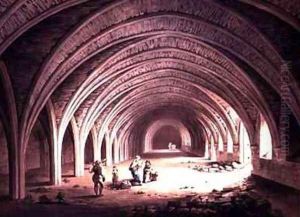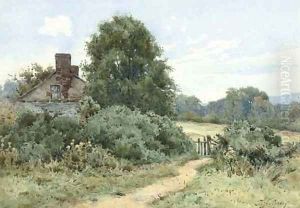James Halfpenny Paintings
James Halfpenny was an English architect and architectural writer, known for his contributions in the mid-18th century. While the precise dates of his birth and death remain uncertain, he is most notably active between 1752 and 1755, a period during which he produced significant works that have contributed to the understanding and appreciation of Gothic architecture in England. Halfpenny's career is particularly marked by his publications which focused on Gothic designs, contributing to the Gothic Revival movement that gained momentum in the late 18th and early 19th centuries. Halfpenny's work is characterized by a detailed study of medieval architectural elements, which he aimed to adapt for contemporary use. His publications, often co-authored with others such as his son, also named James, provided patterns and designs for buildings in the Gothic style, making it accessible for architects and builders of his time. Among his notable works is 'Gothic Ornaments,' published in 1752, which was a significant contribution to the Gothic Revival. This book, along with others, helped to disseminate the principles of Gothic architecture, influencing the design of buildings well into the 19th century. Despite his contributions to architectural literature and the Gothic Revival, little is known about Halfpenny's personal life or his architectural projects outside of his publications. His legacy, therefore, primarily rests on his written works, which continue to be of interest to historians and architects studying the development of Gothic Revival architecture. The lack of comprehensive records about his life and the exact date of his death adds an element of mystery to his biography, but his influence on the architectural landscape of England during a critical period of stylistic transition is undeniable.

